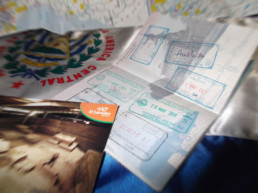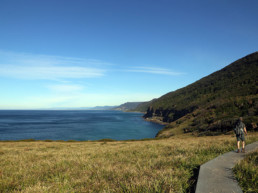Costa Rica is one of the most popular destinations in Latin America, attracting flocks of tourists to its natural beauty and the promise of adventure. Thrill-seekers from all walks of life will find their calling in every corner of this country, from ideal winds for paragliding and an abundance of tubular waves for surfers, to the majestic Isla del Coco, a diver’s dream off the Pacific Coast.
The most popular destinations in the Central American nation are the famous cloud forest of Monteverde, full of wildlife and yes, adventure (you can zipline through the forest in an almost Tarzanic fashion); Arenal, the most active volcano in the country; and the beaches of Guanacaste, packed with good waves, good parties, and sun all year long.
You might think that all of its secrets have been discovered, but the small country is all but lacking in surprises – one of which I recently stumbled upon thanks to Pinterest: Rio Celeste.
Rio Celeste
Rio Celeste is located in the Volcán Tenorio National Park in the Guanacaste region – around 26 miles northeast of La Fortuna, a popular town where tourists head to when visiting Arenal Volcano.
Volcán Tenorio National Park was established in 1976, yet it did not include the volcano from which it gets its name until 1995. It’s host to a wide array of flora and fauna, including pumas and the friendly capuchin monkey. While the park boasts four volcanoes and two craters, its main attraction is the Rio Celeste.
The beautiful river and waterfall are not the result of photoshopping or instagram filtering. What you see is really what you get. In fact, a local legend claims that the almost surreal hue of the Rio Celeste is the result of God washing his paintbrushes there after colouring the sky blue. Kind of neat, although certainly not scientific at all.
According to scientists at the Universidad de Costa Rica, the unbelievable blue tone of the Rio Celeste is not a chemical phenomenon, but an optical one. Most people would believe that its colouring is a result of sulphur in the water, given that there are volcanoes in the area, or another substance such as copper, but it turns out that it’s actually the result of the way the water reflects the light in the river.
Scientists discovered a layer of whitish substance covering the rocks at the bottom of the Rio Celeste, composed of aluminium, silicon, and oxygen. This substance is responsible for reflecting the light of the sun in the water, giving the blue colour that makes the river so special. While the substance can still be found in the adjacent rivers, the size of the particles and the amount found is considerably lower than in the Rio Celeste. This would explain the famous teñideros, where visitors can see the water changing from its normal clear colour to the mind-blowing blue tone that distinguishes the river.
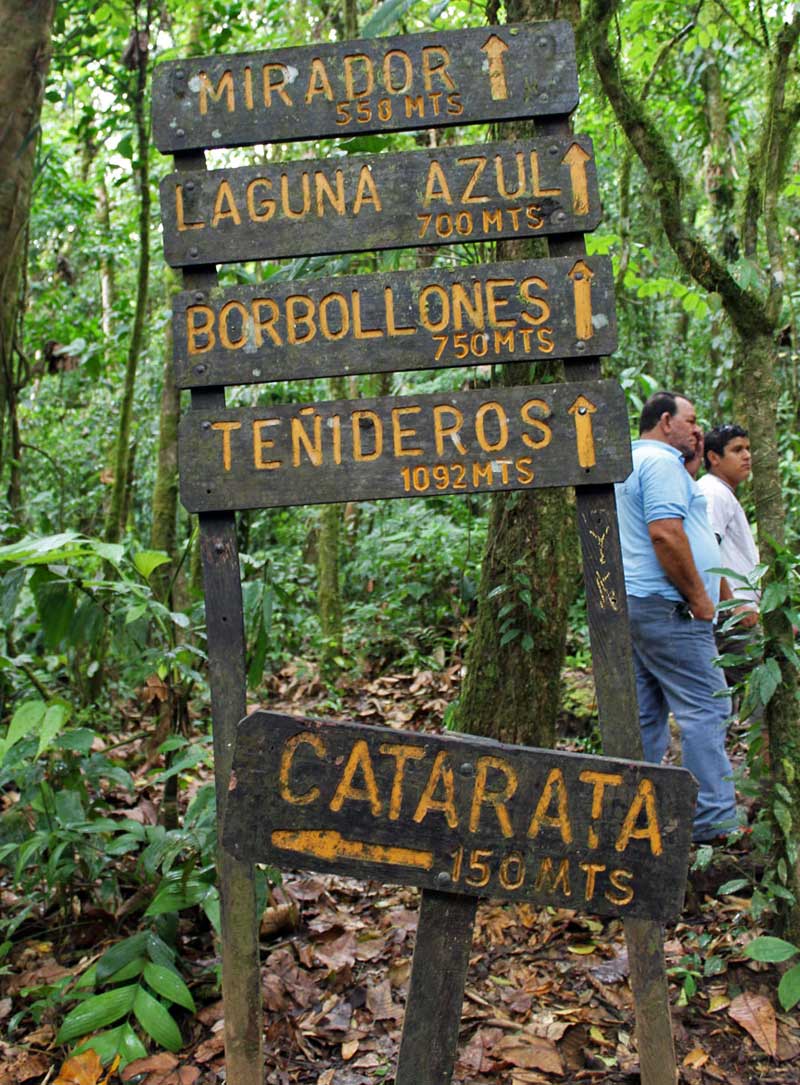
There are several attractions to see during your visit, the main one being the waterfall. There are also the teñideros, the meeting point of the Rio Celeste and the Quebrada Agria and Quebrada Buena Vista; the borbollones, where the river water is boiling and bubbling; the lookout point where you can see the river below and the volcano in all its majesty; the blue lagoon and the thermal waters, which, at the time of writing, were closed to the public.
Hiking Rio Celeste
Once you are in the park’s entrance, you should estimate at least two hours to see all of the spots related to the Rio Celeste. The entry fee is 900 colones for nationals and residents, or $10 for tourists. Unless you have a face that is unmistakably that of a tourist, you can get away with paying 900 colones (less than 2$). Nobody is really checking. If it’s particularly busy, the park rangers may ask for one person in your group to pay for everyone, so you could probably sneak in here as well.
While researching Rio Celeste before my own trip, I kept reading that the trail was really muddy. I honestly could not imagine anything as exaggerated as I read, but once there – and this was in April, which is still considered to be the dry season – I faced everything I had been warned about, and more. So yes, hiking boots, or at the very least outdoorsy shoes, are in order. There were many people with improper footwear that ended up to their ankles with mud and, needless to say, had to carry on barefoot.
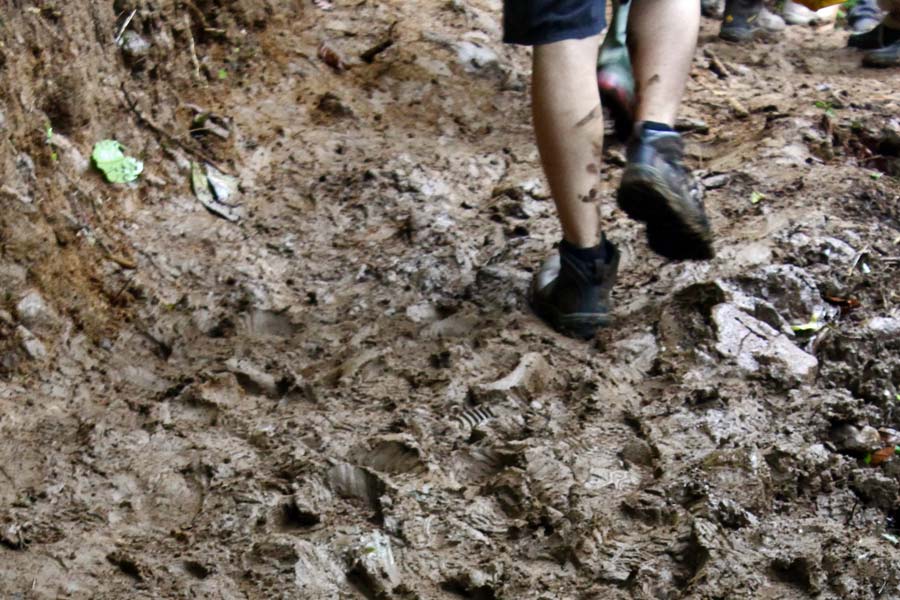
The trail can be deceiving at first, since it starts off paved. Don’t be fooled and trust me that it gets muddy. About 30 minutes into the hike you will get to a ‘roundabout’, where you could either head left and downwards to the waterfall, or right and upwards to the rest of the attractions. It is less strenuous – and in my personal opinion, more rewarding – to first go to the lookout point, the blue lagoon, the teñideros, the borbollones and towards the rest of the trail, and ending the hike with waterfall – than the other way around.
The water colour is as beautiful as you see in all the pictures. It is so beautiful that Photoshop could not possibly improve it. However tempting it may be, swimming in the waterfalls is not permitted; in fact, the park has also closed access to the thermal waters, which was the swimming alternative once the waterfalls were closed to the public. No matter how prepared or sneaky you may be, there are a number of park rangers surrounding any possible immersion area, especially at the waterfalls.
How To Get To Rio Celeste
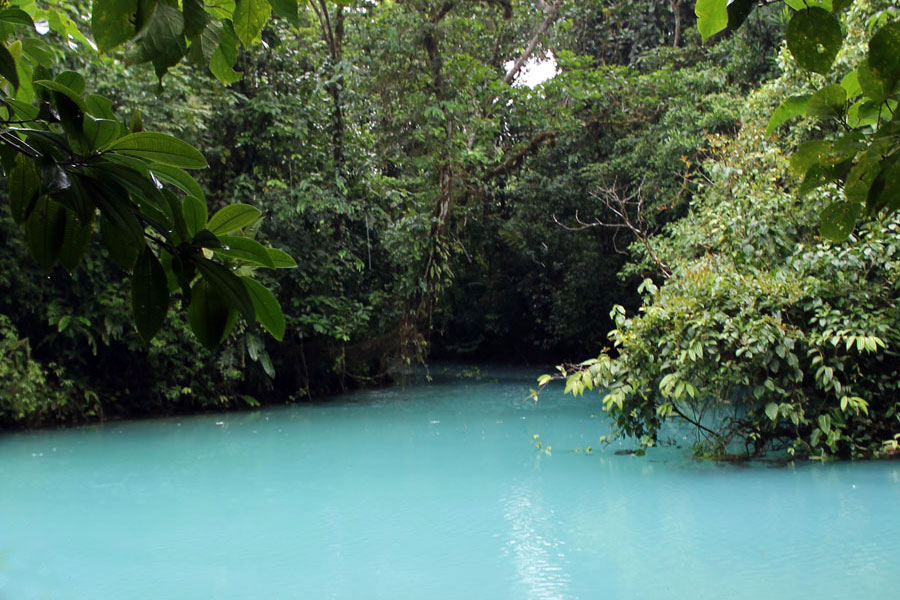
Volcán Tenorio National Park is around four and a half hours away from San José, two and a half hours from Tamarindo, and just a little more than an hour away from La Fortuna. It could be done as a day trip from either destination, as long as you have your own vehicle, although it can be pushing it from San José. There are several lodges around the National Park, but in all honesty, the main attraction is the Rio Celeste and it would be much better to carry on to a different location afterwards.
A 4-wheel drive vehicle is almost a necessity anywhere in Costa Rica, but especially if you are headed to the Rio Celeste, as part of the way is along a dirt road. If you come from the west, you need to drive to the town of Bijagua; from the east (Arenal), you will be looking for Guatuso.
If you are planning on reaching the park by public transport, you need to mentally prepare yourself for a long day ahead, as there is no direct bus – in fact, no bus reaches the park so the furthest you can get is to nearby towns. You will then need to either take a cab or walk 3.2km to the entrance. Further, a bus from San José to Guatuso can take as long as 5 hours.
With the increasing popularity of the Rio Celeste, there are tours available from La Fortuna that will take you to the park and back, which may be your most comfortable mode of transportation when a car rental is not an option.
Have you been to Rio Celeste? Tell us your story in the comments!
Make your next trip the best one.
Departful is a full service travel agency creating truly exceptional travel experiences that are 100% personalized to you. Wherever you’re going, whatever your interests, we help you plan the perfect trip.
Laura Delgado Ranalli
Laura was born and raised in Caracas, Venezuela, but has lived in cities including Sydney, Toronto, Montreal, and Florence and considers herself a citizen of the world. She currently lives in San José, Costa Rica, where she’s opening a boutique for emerging Latin designers. She is a football (soccer) junkie, loves extreme sports and adventure, and enjoys cooking (or anything related with food, to be honest). She also has a passion for learning about WWII and the Holocaust.



